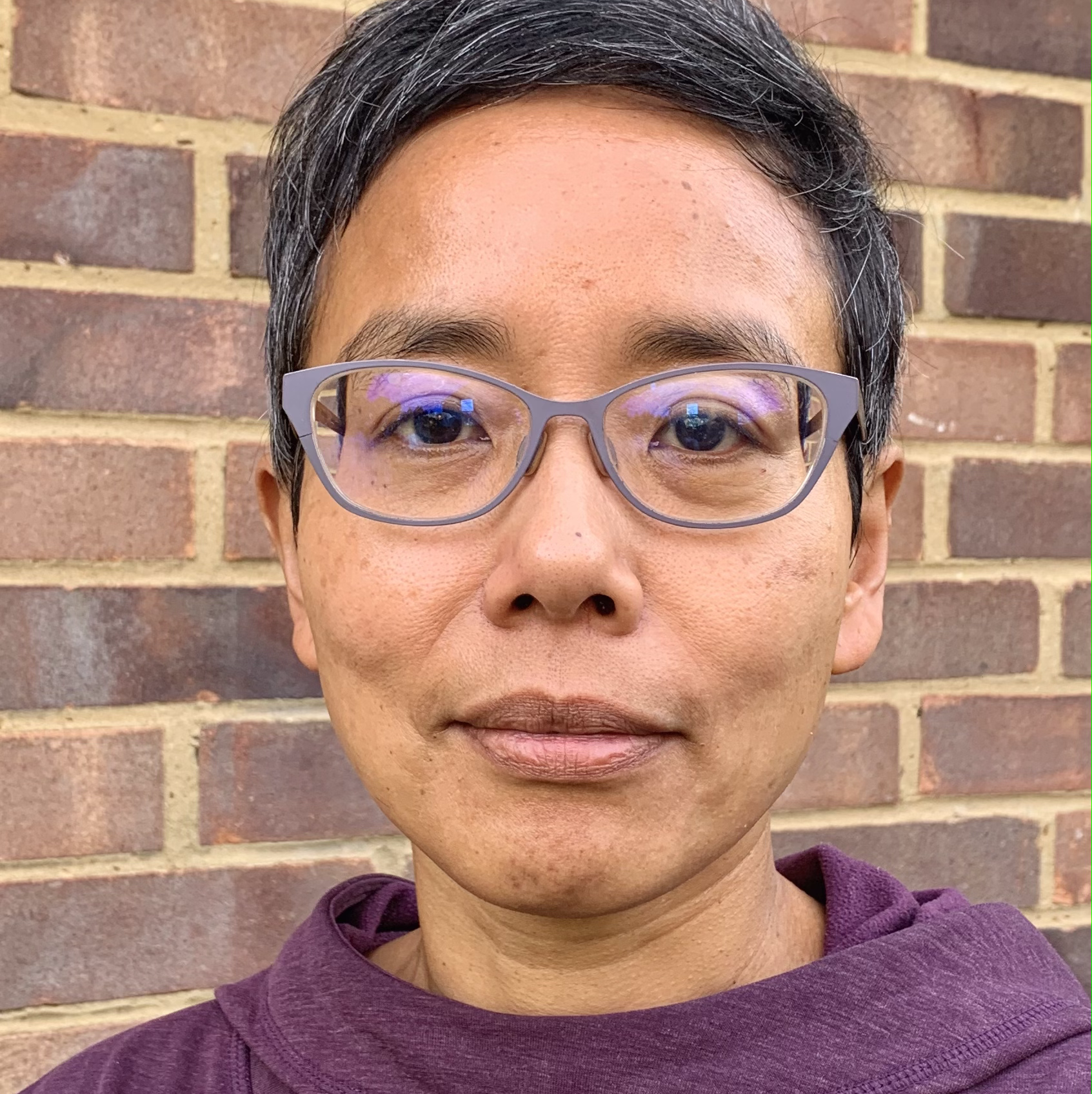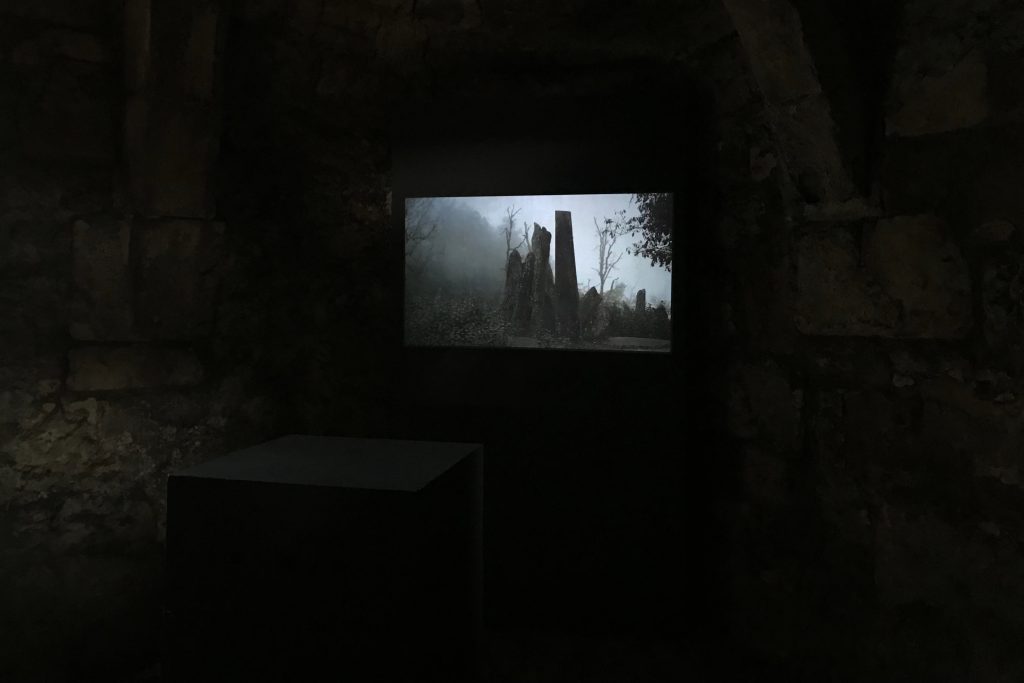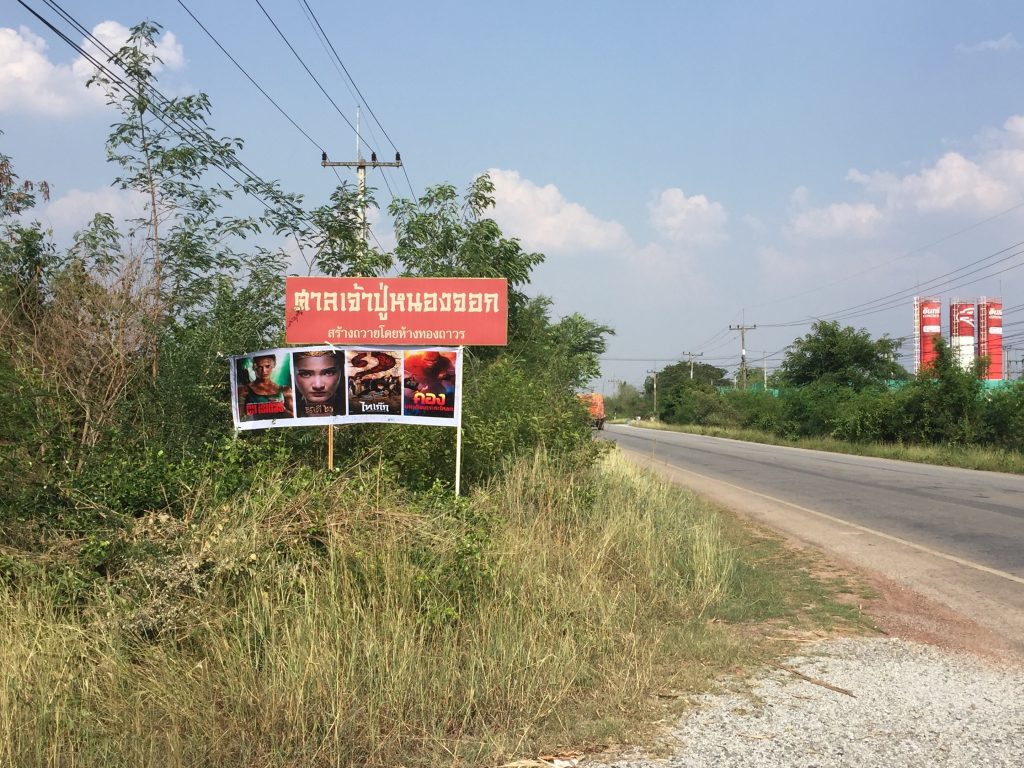May Adadol Ingawanij
VISITOR’S VOICE
Interview with Dr. May Adadol Ingawanij

Please tell us about your research.
I am a writer, theorist, and curator specialising in the moving image practices, contemporary art, and cinema of Southeast Asian artists. My major research and pedagogical themes intersect contemporary art, curatorial and artistic practice, film studies, art history, and area studies. My research projects tend to combine methods of formal and conjunctural analysis with historicisation, curatorial practice, film programming, and a variety of writing forms. I am interested in essayistic and creative modes of writing, and in combining storytelling and fictional registers of writing in long-form research projects. Overall, my research projects and publications try to creatively develop de-westernised and decolonize methods to engage with Southeast Asia’s histories and genealogies of artistic and cinematic practice.
My academic training and trajectory of career development is quite an unusual one. I started out with an undergraduate degree in the social sciences. I completed my PhD on the historical imagination and cultural politics of contemporary Thai cinema. This was at a multidisciplinary graduate school set up as a collaboration between several London arts and architectural institutions and Birkbeck, University of London. During the past fifteen years, I have been based in an art school context within the University of Westminster. I run the University’s Centre for Research and Education in Arts and Media, which is a leading centre of practice-based, artistic, critical, theoretical, and historical research in the broad areas of art and creative and interdisciplinary practice. In my teaching activities, I mostly supervise PhD researchers who undertake what is called practice research (or sometimes artistic research). They develop projects that incorporate artistic or curatorial practice into their processes and methods of research. Their research outcomes combine artistic and creative works with diverse forms of writing. These experiences have taught and enabled me to develop a multidisciplinary approach to research, one which incorporates a plurality of analytic and creative forms.
How many research themes do you have?
My research explores decolonial and de-centred histories and genealogies of cinematic arts; legacies of artistic and political vanguardism in Southeast Asia; forms of potentiality and future-making in contemporary artistic and curatorial practices; and the aesthetics and circulation of moving images, art, and independent films in, of, aligned, and related to Southeast Asia.
Why do you find your research topic interesting?
Southeast Asian contemporary art and moving image practices are incredibly fertile grounds for exploring some of the key questions of our time. Among these are questions concerning the potential of art and imaginative practices to propose different common futures and ways to exist otherwise. Significantly, this area of research and practice raises important questions about 1) the ways that colonial and revolutionary legacies persist and shape present-day practices of institutions and peoples, and 2) how communicative, aesthetic, and expressive forms emerge in response to such legacies.
Researching contemporary Southeast Asian artistic practices also means constantly asking how you want your work to contribute to the task of undoing the legacies of epistemological colonization; and asking what you need to do to fully participate in this very dynamic terrain of practice, debate, and thinking that has been emerging over the past few decades, rather than just observing from a distance. I love how demanding and sociable this terrain is ー there is a lot of thinking and doing with other people, an expectation to develop capacities to look and listen closely, to try to think legible thoughts with objects and experiences that retain their right to opacity, to keep learning new technologies and practical skills. There is an openness to experimentation. There is also the constant push and pull between, on the one hand, the need to develop disciplinary tradition through establishing commonly recognised concepts, methods, and research procedures, and on the other hand, the need to keep things open, make unusual connections, and resist the building of disciplinary boundary.
An example is one of my current major projects, Animistic Apparatus. It places contemporary moving image practices, such as the installations, films, and videos of Southeast Asian artists Apichatpong Weerasethakul, Lav Diaz, Araya Rasdjarmrearnsook and Nguyen Trinh Thi, in constellation with the region’s itinerant film projection rituals that are performed as an offering to powerful local spirits. The project thus entwines artists’ moving image practices with Southeast Asia’s scattered genealogies of animism (defined as improvisatory rituals and apparatuses of human-spirit sociality and communication).
In devising this experimental method for gathering and juxtaposing cinematic and mediating practices, the underlying aim of Animistic Apparatus is to conceptualise the regional, enunciative, cosmological, and relational characteristics of Southeast Asian artists’ moving image practices. The affinity between artistic and animistic practices that the project identifies ultimately concerns the agency of precarious humans to enhance life’s possibility and build relations. It affirms bonds of sociality across times and beings within an ecology of existence in which powerless humans nevertheless claim the agency to orientate toward and to imagine other futures. The project has already stimulated a variety of activities.[1] While a visiting fellow at the Center for Southeast Asian Studies, I am working on the monograph component of the project, Animistic Medium: Contemporary Southeast Asian Artists Moving Image.

How did you get started in your research and how did you come to focus on your current research?
Given that my background is itinerant, it is probably not surprising that I have a longstanding interest in different ways of knowing, in the politics of cultural and epistemological difference, and in trying to understand that which challenges received wisdom and eludes neat categorisation. Over time, these interests have grown into an agenda to develop experimental and decolonial methods for researching cinematic arts in Southeast Asia and the global south, which would de-centre teleological assumptions concerning the connection between the traditional, the modern, and the contemporary.
During the past decade, I have been developing speculative approaches to historicising genealogies of cinematic practice in Thailand and Southeast Asia. My motivation is to shift away from the established narrative that cinema is the cultural form and contribution of cosmopolitan urban elites. For instance, in my work on the proliferation of film circulation in Thailand during the Cold War period, I disinter practices and circuits of itinerant open-air screenings via the projection of junk celluloid prints to conceptualise the role of humans as intermediaries in the cinematic apparatus. My proposition is to consider what cinema is when humans form part of the ecology of cinema as voice narrators in intermedial live film projection performances, or as projectionists in itinerant rituals of cinematic offerings to spirits.

Working with independent and dissident artists whose contexts of creation are fragile and at-risk artistic and cultural infrastructures, I have learned that it is my job to curate works in ways that support artistic processes, and to highlight practice as forms of research and experimentation in knowing, relating, communicating, and existing otherwise. It is for this reason that I prioritise situating my written publications within curatorial projects that have multiple components and many collaborators.
One of my longstanding research commitments is to the praxis of the Filipino radical filmmaker Lav Diaz, whose films I have been curating and writing about since the late 2000s. Through curatorial activities and publications, I explore the material, institutional, and discursive challenges of exhibiting Diaz’s very long films. My curatorial approach to thinking with and about Diaz’s films adapts the migratory model of exhibiting radical films and artists’ moving image. I draw inspiration from Southeast Asian genealogies of itinerant film projection, along with the values of informality and affirmation of the everyday that is characteristic of a mode of socially engaged Southeast Asian contemporary art. My writings analyse Diaz’s historiographic and temporal aesthetics in the context of the legacies and aporias of the Philippines’s artistic and cultural vanguardism. I also analyse the vexed exhibition history of Diaz’s long films, critically highlighting tensions shaped by the persistence of the western modernist paradigm of art film spectatorship in advocating global contemporary art or radical films.
Have you had any difficulties in putting together the results of your research into a research paper or book?
All the time! I have learned that the struggle to pull together coherent thoughts and expressions from complex, intense, and confusing research experiences, and from the plethora of materials you have gathered, is part of the process. The skill to develop is to stay inside that process, give it time, and not be afraid of not knowing, or the possibility that your initial ideas will unravel, the process will escalate out of control, or things will run aground. This is how surprising thoughts emerge. Not fearing the process of inquiring and learning something new and trusting your own capacity and intuition to push initial thoughts further along even amid that sense of your ever-inadequate grasp, is something I have learned from many of the Southeast Asian artists I have had the privilege of spending time with.
What would you say to people who want to become researchers?
Research is what you do with other people, and trust is an important quality when it comes to finding out something together.
What ambitions do you have for the future?
I would like to develop new collaborative research around the theme of speculative and imaginative practices of future-making, involving the creation and dissemination of moving images. This would explore ecological and redistributive concerns, and imaginings of possible futures, in artistic and curatorial practices. One strand of this project would explore the potential of Southeast Asian artistic research to engage with climate and ecological change. Questions to ask would include: What are the characteristic features of artistic research that responds to Southeast Asian realities of climate change? How might definitions, concepts, values, and methods of artistic research be refined, enhanced, or challenged through studying Southeast Asian artistic research practices that are responding to climate change? I would also like to develop a film curatorial project that explores critical, historical, speculative, and retroactive visions of the future. This would situate Southeast Asia as a starting point for inquiry, yet open up toward other global south localities and regions. It would include a screening series on the student as an emblematic figure of transformation in modern and contemporary film and moving image practices.
(July 2022)
Note
[1] These include: an exhibition at a film festival in rural northeast England in which we installed a selection of moving image works by Southeast Asian artists (including Lucy Davis/The Migrant Ecologies Project, Chris Chong Chan Fu, and Tanatchai Bundasak) in medieval and early modern ruins and buildings in the town of Berwick-upon-Tweed; a field learning, artistic research and performance rehearsal event in a province in northeast Thailand where there is a strong tradition of projecting films for spirits, which involved around forty artists, writers, curators and researchers; a creative non-fiction journal article that intertwines the fable form, animistic ritual practices, and itinerant cinema; commissioning online publications and moving image works; and curating international artists’ moving image screening programmes presented at arts and academic venues.
May Adadol Ingawanij is a Visiting Research Scholar of CSEAS
from June – August 2022